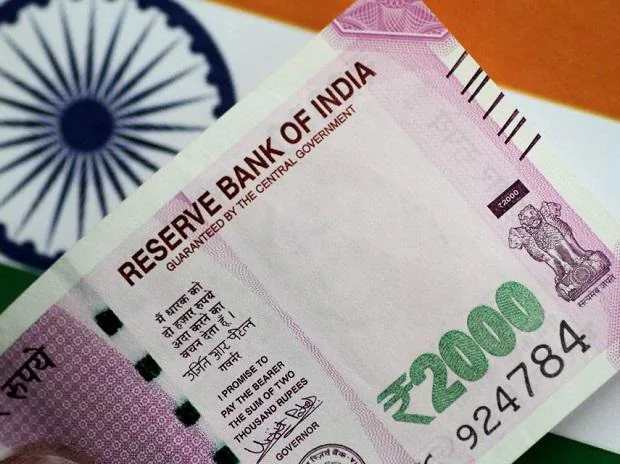[ad_1]
The rupee closed at a new low against the dollar on Friday, even as market interventions by the Reserve Bank of India (RBI) helped the local currency recoup much of the hefty losses suffered in the course of the trade when it breached the 81 mark for the first time.
According to dealers, the RBI sold dollars heavily around the 80.20-80.25 per dollar mark in order to curb the volatility in the rupee. The central bank dipping into foreign exchange reserves to control the rupee’s fall over a period, among other factors, resulted in reserves falling for a seventh straight week —dropping to $545.65 billion in the week to September 16, the lowest level since October 2, 2020, according to RBI data. The figure was $550.87 billion at the end of the previous week and $631.53 billion on February 25, when Russia invaded Ukraine.
On Friday, the rupee settled at 80.99 per dollar, against Thursday’s level of 80.87. In the course of the day, the domestic currency breached the 81 per dollar mark for the first time, touching a new intraday low of 81.26 per dollar.
So far in 2022, the local currency has depreciated 8.2 per cent versus the greenback.
Government bonds, too, weakened sharply, with the yield on the 10-year benchmark paper closing 8 basis points higher at 7.39 per cent. Bond prices and yields move inversely. A rise of one basis point on the 10-year bond yield corresponds to a fall in the price of around 7 paise.
The rupee has suffered a spell of sharp weakness over the past couple of days, weakening 1.24 per cent versus the dollar since Wednesday, as the greenback has surged globally following signs from the Federal Reserve of a longer-than-expected policy tightening cycle. Over the past couple of days, the rupee has weakened more than most other emerging market currencies.
“The Indian rupee marked the biggest weekly decline after April 2021 amid a stronger dollar index and risk-off moods. There seems to be no turning back for the dollar as it made a fresh two-decade high and, in turn, pushed the rupee to a record low level,” said Dilip Parmar, HDFC Securities research analyst. “In the near term, the dollar is likely to bid well (firm demand) as traders focus on the growing gap between interest rates in the US and elsewhere. Spot USD/INR is having resistance at 81.40 and support at 80.55.”
The dollar index, which rose to a fresh 20-year high of 111.81 on Friday, was at 110.64 the previous day. So far in 2022, the dollar index has strengthened more than 16 per cent. Higher US interest rates increase returns in the world’s largest economy and diminish the appeal of assets in emerging markets, such as India.
Though the RBI has drawn down heavily upon its reserves over the last few months, currency traders said now believe the central bank may now let the rupee depreciate in line with global fundamentals and only accelerate its interventions close to the 82 per dollar level.
“The rupee is expected to settle in a range of 80-82 in the near term with an expectation of sustained RBI intervention between 81.5 and 82 levels to prevent a runaway rupee depreciation,” said Ritesh Bhansali, vice-president, Mecklai Financial Services.
Earlier this month, the RBI said that the level of reserves worth $553.1 billion (as on September 2) was equivalent to nine months of imports projected for the current financial year. The level of reserves in September 2021 was equivalent to almost 15 months of import cover.
Apart from a sharp rise in US bond yields over the past couple of days, a key factor driving the sell-off in domestic bonds was lack of an announcement about the inclusion of Indian sovereign debt in a global bond index, dealers said.
Such a move is estimated to bring around $30-billion inflows over a year.
“The recent rally in the Indian bond market was because of speculation of index inclusion. September is the month in which indices hold their reviews. So if they don’t announce it now, the process will be delayed. In that case, the 10-year yield can go back to 7.50 per cent,” said a dealer with a foreign bank.

[ad_2]
Source link



